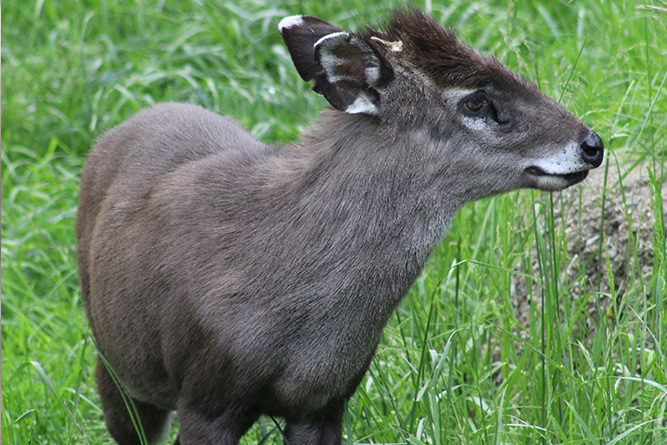The Tufted Deer, a remarkable member of the deer family, is known for its distinctive appearance and fascinating behaviors. This species, native to Asia, often surprises with its tufted forehead and endearing features.
Table of Contents
Species Data
- Class: Mammalia
- Order: Artiodactyla
- Family: Cervidae
- Scientific Name: Elaphodus cephalophus
- Life Span: 8 to 10 years
- Height: 55-65 cm (22-26 inches)
- Weight: 25-30 pounds (11-14 kilograms)
Description
Tufted Deer are relatively small in size compared to other deer species. They are recognized by the tuft of dark hair on their forehead, which gives them their name. Males (bucks) have small, simple antlers, while females (does) lack them altogether.
Appearance
Their grayish-brown coat is speckled with white spots, providing effective camouflage in their forested habitats. Their large, expressive eyes and rounded ears add to their endearing appearance.
Behavior
Tufted Deer are primarily crepuscular, meaning they are most active during dawn and dusk. They are known for their agility and ability to navigate dense forests and mountainous terrain.
Habitat
They are found in mountainous regions and dense forests across parts of Asia, including China and Myanmar. Their preferred habitats offer a mix of cover and open spaces.
Diet and Nutrition
Their diet consists of a variety of vegetation, including leaves, twigs, and fruits. They have a specialized digestive system that allows them to extract nutrients efficiently.
Mating Habits
Tufted Deer typically mate in late fall or early winter, with a gestation period of about 200 days. Female deer give birth to a single fawn, which they protect and nurture in their forested homes.
Mating Behavior
- Reproduction Season: Late fall to early winter
- Pregnancy Duration: Approximately 200 days
- Baby Carrying: Females protect and nurse their fawns in forested areas
- Independent Age: Fawns become independent at around 6 months
- Female Name: Doe
- Male Name: Buck
- Baby Name: Fawn
5 Fun Facts for Kids
- Tufted Deer get their name from the tuft of dark hair on their forehead.
- They are excellent jumpers and can leap over obstacles with ease.
- These deer are known for their unique vocalizations, including barking and whistling sounds.
- Tufted Deer play a vital role in seed dispersal, helping forests thrive.
- Their striking appearance makes them a favorite among wildlife enthusiasts.


